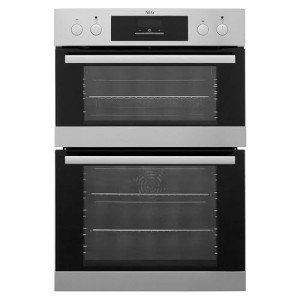The Rise of Built-In Ovens: A Seamless Approach to Modern Cooking
In contemporary cooking areas, where design aesthetic appeals blend flawlessly with performance, one device stands out as a real video game changer: the built-in oven. As property owners and chefs alike continue to seek ingenious options that improve their cooking experience, built-in ovens have actually ended up being progressively popular. This short article explores the advantages, factors to consider, and patterns surrounding built-in ovens, highlighting why they are a necessary function in contemporary cooking spaces.
What is a Built-In Oven?
A built-in oven is a kitchen device developed to be integrated into the cabinets of a kitchen area instead of standing alone. Unlike conventional freestanding ovens, which can be moved and positioned anywhere, built-in ovens can be found in numerous styles and sizes to fit specifically within designated areas. Readily available in single or double setups, these ovens provide a streamlined look that matches modern kitchen styles.
Benefits of Built-In Ovens
1. Space-Saving Design
One of the most enticing benefits of built-in ovens is their space-saving design. By integrating the oven into kitchen cabinetry, you can free up valuable counter and floor area. This is especially helpful in smaller sized kitchen areas, where maximizing space is vital. Built-in ovens can be set up at eye level, making them more accessible and lowering the need to flex down.
2. Aesthetic Appeal
Built-in ovens contribute to a smooth and cohesive cooking area design. Readily Ovens & Hobs in various finishes-- such as stainless-steel, black, white, and custom cabinetry-- they can blend flawlessly into the general design. This aesthetic appeal boosts the cooking area's visual consistency and raises the space, developing a contemporary and advanced environment.
3. Improved Functionality
Numerous built-in ovens come equipped with advanced cooking innovations, such as convection cooking, steam ovens, and clever features. These improvements enable versatile cooking choices, making it easier to achieve professional-level outcomes at home. Smart built-in ovens can even link to Wi-Fi, allowing users to control the oven remotely, get alerts, and access a range of cooking programs and recipes.
4. Enhanced Ventilation
Due to the fact that built-in ovens can be integrated with kitchen area hoods and ventilation systems, they can assist keep better air quality and reduce cooking smells. This is particularly significant for those who enjoy to cook with fragrant spices and active ingredients, as an effective ventilation system can keep the cooking area comfy and welcoming.
5. Customization Options
Built-in ovens offer a broad range of personalization options to fit specific cooking styles and requirements. From professional-grade devices with multiple cooking modes to compact designs for smaller sized kitchen areas, homeowners can pick the oven that fits their particular requirements. Numerous producers likewise offer personalized front panels, allowing you to match the oven's look to your cabinets for a truly merged appearance.
Factors to consider When Choosing a Built-In Oven
While built-in ovens have lots of benefits, there are essential considerations to bear in mind before making a purchase:
1. Rate
Built-in ovens normally come with a higher cost than their freestanding equivalents due to their style and setup requirements. It's essential to consider both the expense of the oven and any extra expenditures associated with kitchen cabinetry modifications or installation.
2. Setup Requirements
Installing a built-in oven often needs professional assistance, particularly if you need to modify existing cabinets. Guarantee that you think about any expenses connected with setup, including labor and potential cabinetry changes.
3. Size and Dimensions
Before buying a built-in oven, determine the designated area precisely to make sure a correct fit. Built-in ovens can be found in different sizes and configurations, so picking one that aligns with your requirements and kitchen area design is important.
4. Way of life and Usage
Consider your cooking practices and needs when choosing a built-in oven. If you often host big events, a double oven might be more useful. On the other hand, if you have a compact kitchen, a single-wall oven might be adequate.
Trends in Built-In Ovens
The kitchen area device market is continuously evolving, and built-in ovens are not exempt from emerging trends. Some current trends consist of:
Smart Technology Integration: With the increase of smart home innovation, built-in ovens now typically include connectivity choices. This enables users to keep an eye on cooking progress and change settings by means of mobile apps.
Energy Efficiency: As sustainability ends up being a top priority, many manufacturers are buying energy-efficient built-in ovens that decrease energy consumption while keeping performance.
Multi-functional Designs: Built-in ovens now offer functions such as air frying, sluggish cooking, and steaming, offering adaptability that satisfies a large range of cooking approaches.

Conclusion
Built-in ovens certainly represent a best blend of design, function, and convenience in today's kitchen areas. As more property owners opt for this modern-day service, the focus moves to developing a cooking space that is as visually pleasing as it is useful. Whether you are developing a new home or redesigning your cooking area, thinking about a built-in oven could raise your culinary experience and transform your cooking area into a stylish and practical haven. With a selection of choices readily available and continuous developments in technology, built-in ovens stay a standout choice for both amateur cooks and culinary lovers alike.
